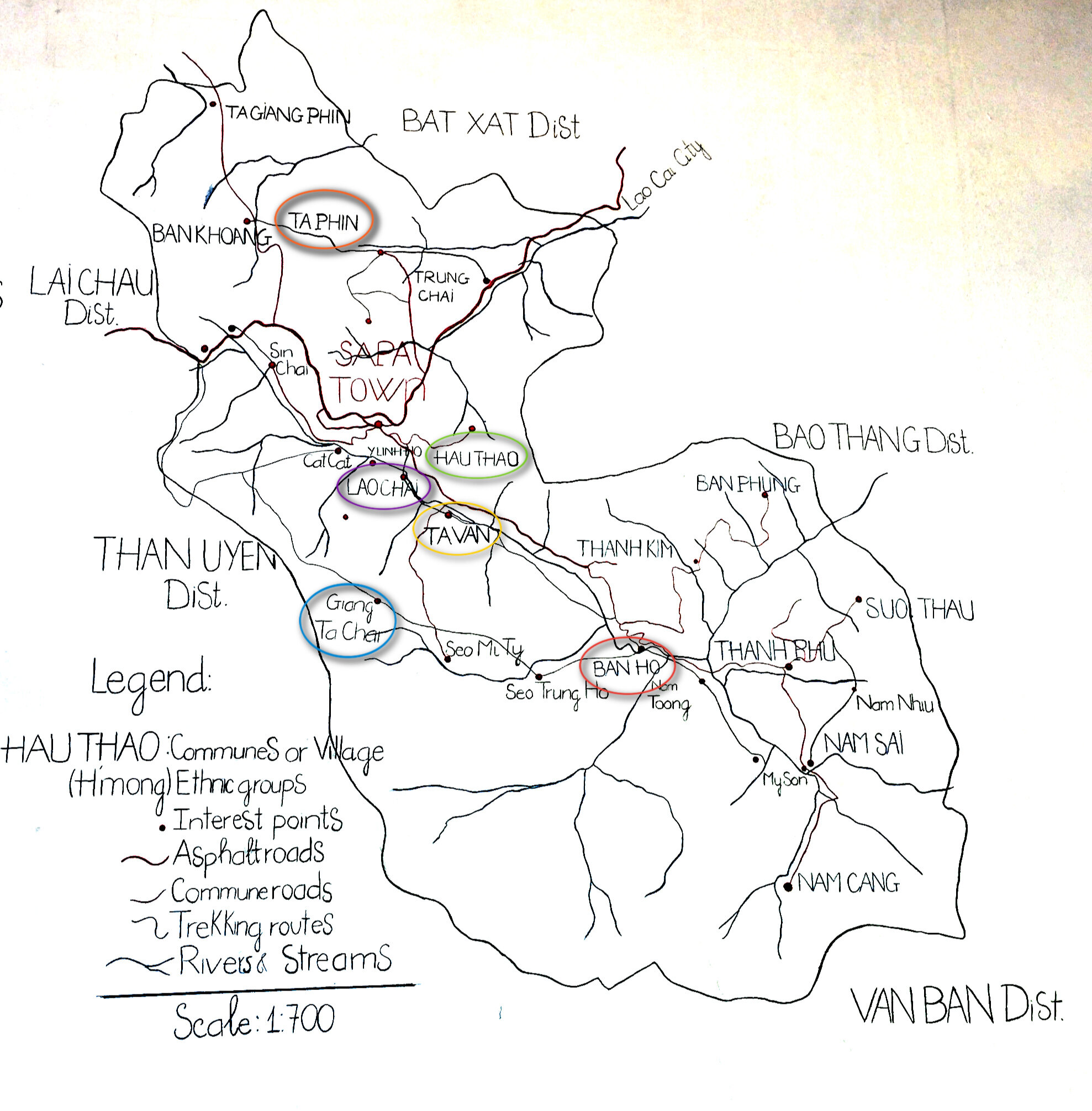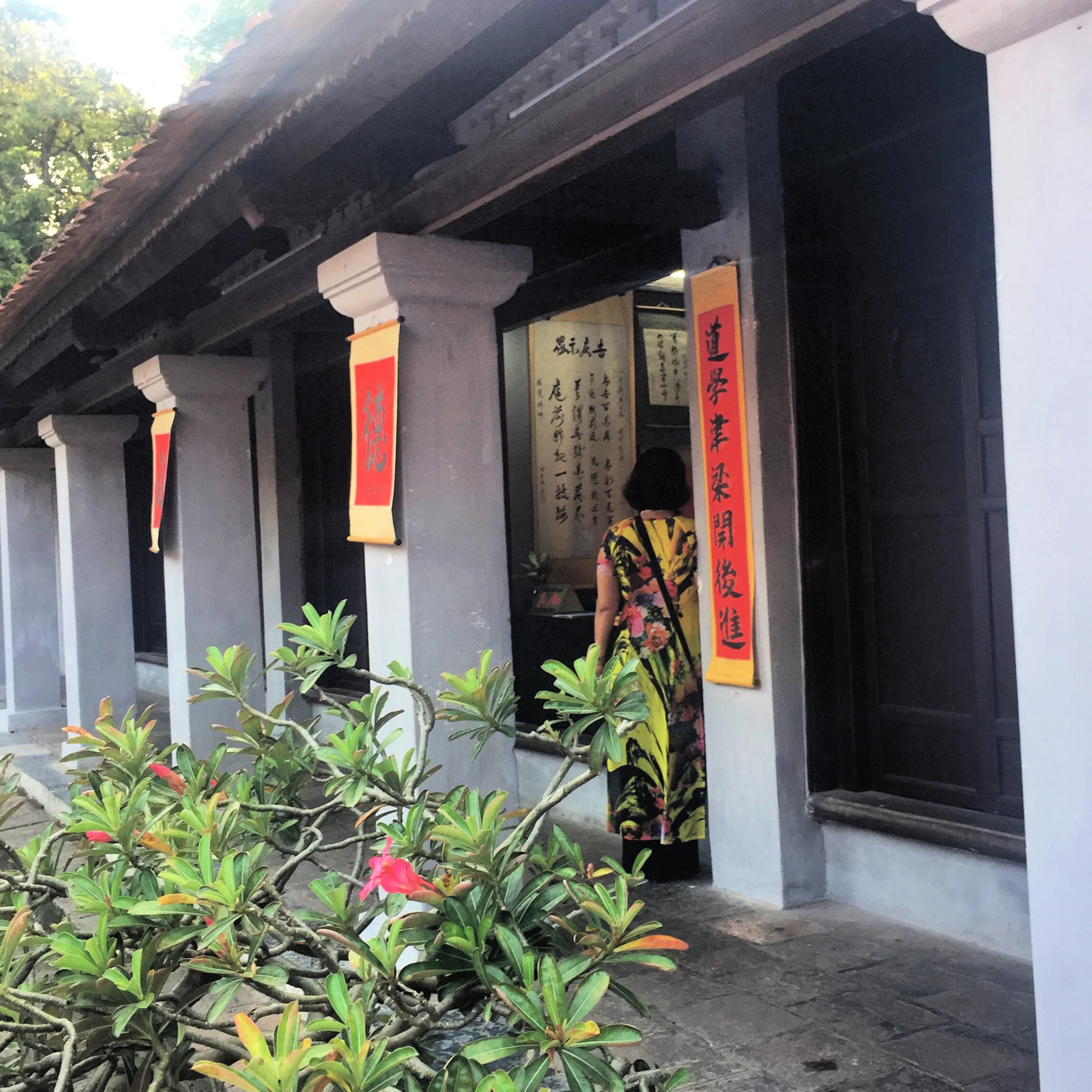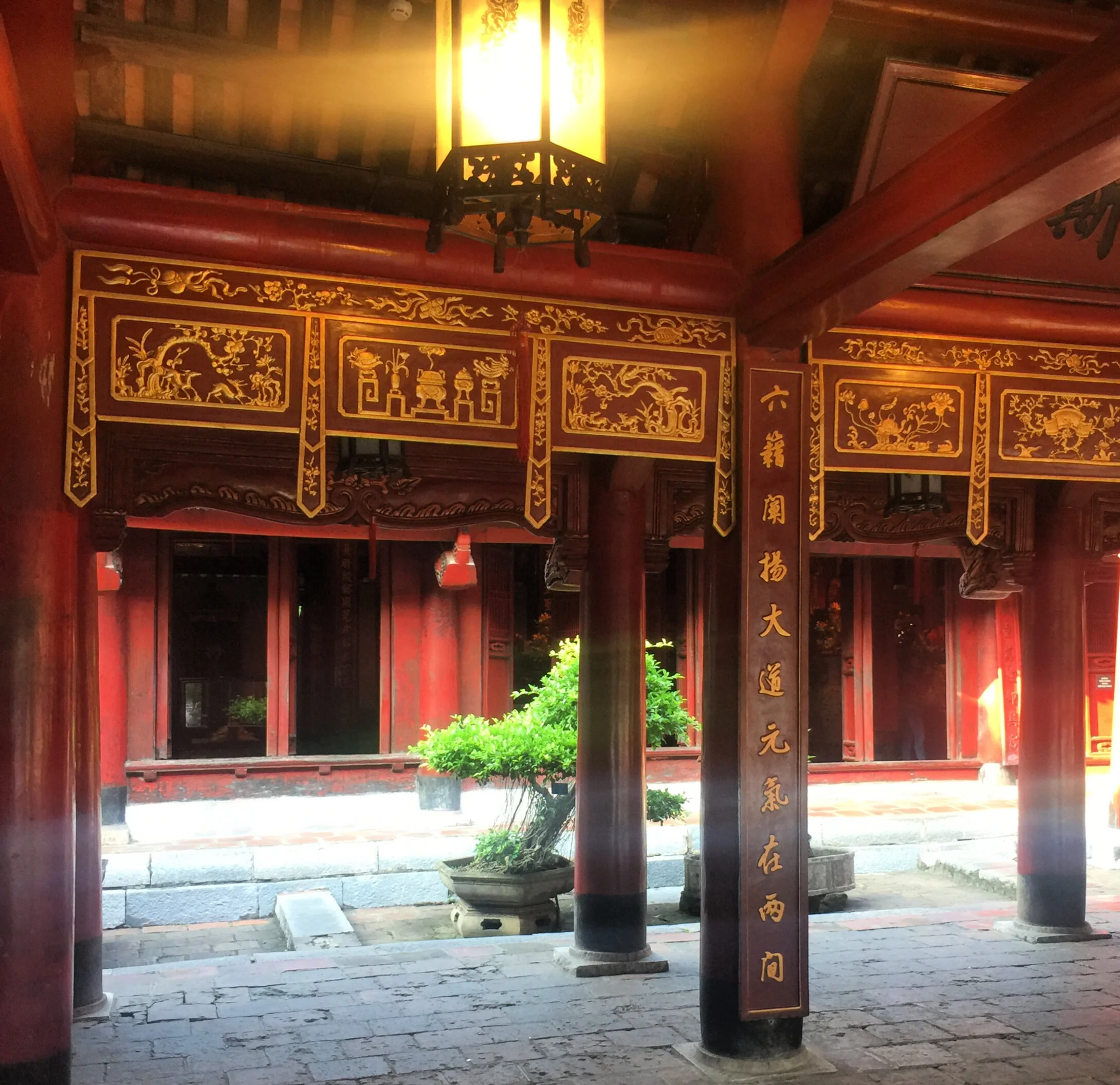In The Quiet American (a book all expats in Vietnam are obligated to read, it seems), Graham Greene describes an early 1950s procession at Phát Diệm Cathedral:
“Past the white statue of the sacred heart that stood on an island in the little lake before the cathedral, under the bell tower with spreading oriental wings and into the carved wooden cathedral, with its gigantic pillars formed out of single trees, and the scarlet lacquerwork of the altar, more Buddhist than Christian . . .”
Thankfully, the cathedral wasn’t significantly damaged in the ensuing 20 years of war, and stands today exactly as described, a unique monument to Catholicism in Vietnam. Built between 1875 and 1899, one might assume the cathedral was constructed as part of French colonization efforts; in fact, it is entirely the work of an already long established local Catholic community.
Jesuit missionaries, primarily from Portugal and Japan, first built small communities of converts in North and Central Vietnam in the mid-16th century. Soon, French and Spanish Jesuit and Dominican missionaries entered the fray. By the early 1600s, Catholicism had gained enough of a foothold to make ‘toleration of Christianity’ a political issue. In 1630 Trịnh lord Trịnh Trang decreed from Đông Kinh that the French Jesuit mission (led by Father de Rhodes, the inventor of the modern Vietnamese alphabet using modified European letters) represented a threat to Vietnamese society, and expelled it from court and country (or Đàng Ngoài, at least). Throughout the north, Trịnh sanctioned pogroms in Catholic communities were regularly used to limit Catholic influence and expansion.
The Nguyễn lords in central and south Vietnam (Đàng Trong) were more tolerant of Catholic missionaries, because unlike the Trịnh (who purchased their artillery from Holland and England), they relied on Catholic Portugal to supply cannons. Nevertheless, ten thousand Catholics were martyred during the Tây Sơn rebellion (which temporarily bested both Trịnh and Nguyễn dynasties from 1778 to 1802). These local Catholics were both specifically targeted as traitorous collaborators with Nguyễn Ánh, and more broadly scapegoated as harbingers of Vietnamese colonization.
The Nguyễn dynasty relied on Catholic missionaries to arrange for European cannons and soldiers to put down the Tây Sơn rebellion, defeat the Trịnh, unify Vietnam, and conquer most of Cambodia. This was done by 1802, and as long as Nguyễn Ánh (installed in Huế as Emperor Gia Long) lived, Catholicism spread unchecked. At the time of his death in 1820, 4% of the Vietnamese population, including his firstborn son, had converted. However, Emperor Gia Long saw this tolerance as the repayment of a personal debt of gratitude, not a purposeful theological or philosophical expansion beyond Buddhism and Confucianism. So, he skipped over his firstborn to make a strictly Confucian and isolationist son, Minh Mạng, his successor.
Emperor Minh Mạng expelled and banned all missionaries just 5 years later, in 1825. He went as far as inspecting French merchant ships for non-sailors, banning French and Spanish interpreters from working, requiring all priests to gather at Đà Nẵng and henceforth depart, and executing those who would not. It’s important to note that these efforts weren’t specifically anti-French nor even particularly anti-Catholic, Minh Mạng simply shunned all Western influence and contact, also denying British and American overtures. Unlike his father, he preferred fighting Siam and Qing unaided to accepting foreign influence alongside foreign weapons.
It’s possible that Emperor Gia Long’s suspicions weren’t misplaced, or perhaps they acted solely out of desperation to survive, but in 1833 two thousand Vietnamese Catholic troops led by Father Nguyễn Văn Tâm rebelled against Minh Mạng, holding Saigon for two years while attempting to fight northwards and install Prince Cảnh (Gia Long’s firstborn) as a Catholic emperor. Though that particular effort failed, Vietnamese Catholics collaborated with French colonizers and fought against Nguyễn armies from the 1850s through the 1880s, and were rewarded with government jobs and formerly royal lands after France’s success.
Of course, just as the Nguyễn dynasty had come to perceive their Catholic allies as dangerous interlopers within a single generation, so did the French. This is the generation, from 1875 to 1899, when Phát Diệm Cathedral was constructed: when Vietnamese Catholics were still proudly reaping what they had sown, and only beginning to perceive their privilege would not outlive their usefulness. Though European elements were inevitably incorporated, the architecture here was never intended to imitate foreign churches, and the bishops here were never foreign born.
A Catholic never gained the Annamite throne; the French considered it more useful for the puppet emperors to remain Buddhist and Confucian, thereby appeasing the majority of Vietnamese. And France itself had just buried its last monarch (the defeated and exiled Napoléon III) in 1873, finally and permanently transitioning to Republicanism.
The nun who showed me around was a young woman named Rose, and she was earnest in her beliefs, an intellectual, eager to learn the English names for everything (I supplied ‘sacred heart’, ‘immaculate heart of Mary’, ‘order of nuns’, and ‘stations of the cross’, among others I forget). She hoped to eventually be deployed to Europe or America or elsewhere she could see our cathedrals and hear our masses. She showed me how to ring their bell, which doesn’t have ropes; you strike it on one side with a wooden log in the manner of Buddhist temple bells. She showed me how the columns of the church were made of massive ironwood trees, in the manner of Vietnamese traditional houses; how the gongs are sounded to begin processions (where in the West, a table bell serves); how the angels’ faces had been carved and painted to reflect the local Catholic population at the time: 11 cherubim with Asian features, one with European.
The priest who oversaw the cathedral’s construction is buried in its courtyard, with a carved stone dragon bed fronting his grave in the manner of Vietnamese emperors. The clouds painted on the ceiling are in the Asian curlicue style; the prayers overheard from the chapels are loud, uniform, continuous and monotone chants in the Buddhist manner, not the singsong intermittent mumbles of the West. In the West, three doors on the front of a church are for the convenience of getting people into the building, nothing more; here they are made in the Confucian tradition, so scholars can enter on the left, military men on the right; or women on the left and men on the right; or students on the left, teachers on the right, etc. The more you know about both temple and church architecture, the better you can appreciate the incredibly special blend of this place.
Part of the Kim Sơn rural coast district, Phát Diệm is approximately a 45 minute drive from Ninh Binh city (about $20 on Grab) and so worth it. If you have some hours to explore, the village has several small old churches and restaurants serving local seafood specialties.









































































































































































































































































































